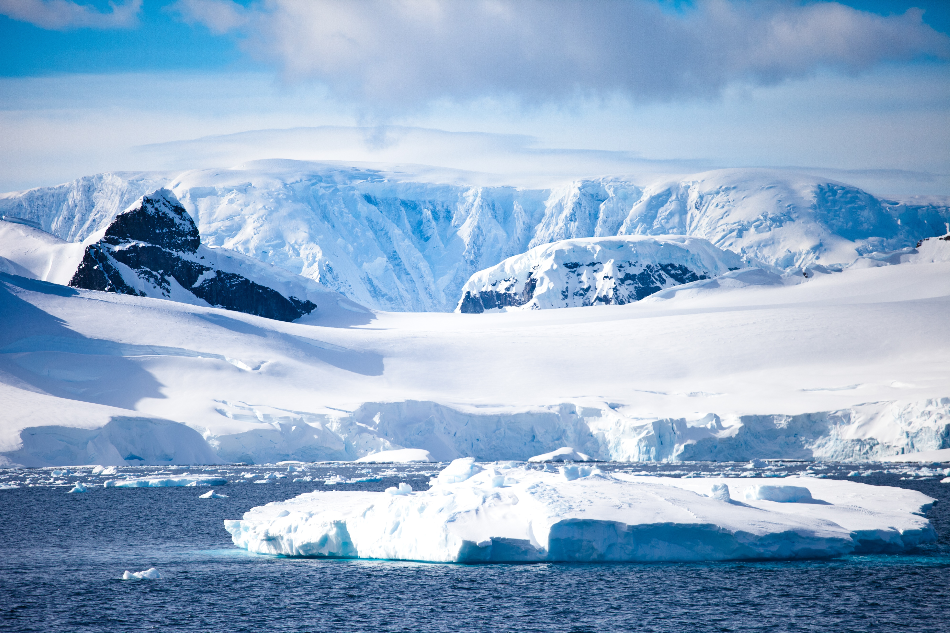
Image Credit: Shutterstock/ Li Hui Chen
Scientists in Antarctica have commenced a mammoth operation: They have drilled into the giant ‘Doomsday’ glacier to investigate any potential collapse.
Known in formal terms as Thwaites Glacier, at 192,000 km2 the dense ice sheet is around the size of the entire state of Florida. Furthermore, due to recent observations scientists believe that the glacier is in a particularly sensitive moment of its life-cycle due to the effects of climate change.
The major concern for scientists is that in the past three decades the extent of the ice loss has nearly doubled which has contributed to a sea-level rise of approximately 4%. Just last year, NASA scientists reported a monstrous cavity, “two thirds the area of Manhattan and almost 1000 feet (300 meters) tall,” opening up at the base of Thwaites.
Rising Sea-levels
Now, the fear is that continued disintegration could lead to the planets sea-level rising by an additional two feet. The necessity for scientists to find out more about the ice melt in Antarctica is due to the fact it accounts for 90% of the Earth’s total ice. So, any significant loss could start a chain reaction that would be catastrophic for coastal cities and towns all over the world.
To get to the bottom of what is going on with the Thwaites Glacier, five teams of scientists used hot water to drill up to 600-700 meters, the point where the ocean meets the base of the glacier. This point is also where the ice is melting most rapidly and could give the scientist key insights into exactly what is going on with the glacier.
Using the NASA funded IceFin robot, the scientists were able to gather data that illustrates the relationship between the glacier, ocean, and sediments. The data will allow the scientists to get a general overview of how the warming waters are impacting the glacial melt as well as looking at how this affects rising sea-levels. Furthermore, it could clarify another impact of accelerated climate change.
The Method
It took five teams of scientists to pull off this remarkable feat of data gathering in the stormiest region on the stormiest continent on Earth. Each team had a specific task; hot water drill teams MELT and TARSAN were responsible for the main drill and another drill a little further south for observations on the oceanographic conditions respectively; team GHC took up the task of drilling bedrock; team THOR extracted cores of sediment; and the Ice Fin team explored the Thwaites grounding zone.
Leading the IceFin expedition, Dr. Britney Schmidt, associate professor of Earth and atmospheric sciences at Georgia Institute of Technology in Atlanta, stated, “We designed IceFin to be able to access the grounding zones of glaciers, places where observations have been nearly impossible, but where rapid change is taking place.” Schmidt remains stationed in Antarctica and will continue to gather data at such a “critical hinge point” for the continent.
The remoteness of this expedition also adds to the magnitude of the research effort as one of the most remote regions on earth. Dr. Paul Cutler of the US National Science foundation said, “It’s amazing to think we’ve only now drilled in the remote region some 200 years after the continent was first sighted.”
Observations at some of these sites have previously been deemed nearly impossible due to the complexity of the requisite logistics, yet these five teams managed to succeed.
We know that warmer ocean waters are eroding many of West Antarctica's glaciers, but we're particularly concerned about Thwaites.
Dr. Keith Nicholls, Team MELT and Oceanographer, The British Antarctic Survey
This new data will provide a new perspective of the processes taking place so we can predict future change with more certainty.
Disclaimer: The views expressed here are those of the author expressed in their private capacity and do not necessarily represent the views of AZoM.com Limited T/A AZoNetwork the owner and operator of this website. This disclaimer forms part of the Terms and conditions of use of this website.